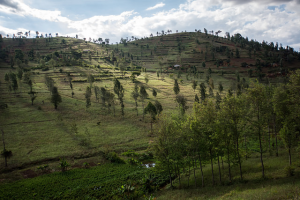 Trees grown on agricultural land significantly contribute to global carbon budgets, say authors in this recent study.
Trees grown on agricultural land significantly contribute to global carbon budgets, say authors in this recent study.
If carbon from trees grown on agricultural land was well accounted for, total carbon estimates for agricultural land would be more than four times higher than they currently are, they add.
This is good news, and getting better: between 2000 and 2010, tree cover on agricultural land increased –three percent, resulting in a 4.6 percent increase in biomass carbon globally.
Yet while the importance of carbon stored by forests is widely recognized, carbon stored by trees on agricultural land has been much ignored, authors say.
Total carbon estimates for agricultural land could be more than four times higher


 The momentum for large-scale restoration has never been stronger. Restoration is increasingly recognized as a
The momentum for large-scale restoration has never been stronger. Restoration is increasingly recognized as a 